6 Most Famous Sea Stacks From Around The World
By: Kratika Maheshwari Fri, 04 Mar 2022 5:52:39
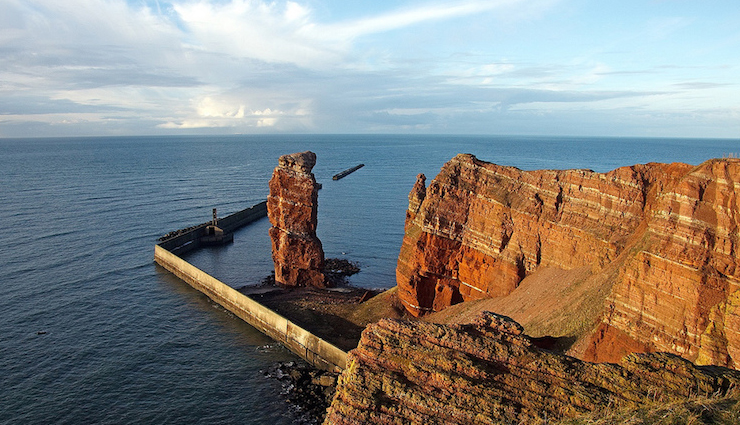
A stack or sea stack is a rock formation made up of a steep or upright column or columns of rock in the sea near a coast. They are formed when part of a headland is eroded by water crashing against the rock or as a result of wind erosion. These impressive formations are intricately created by nature only through time, tide and wind. Here are 6 famous sea stack formations from around the World.
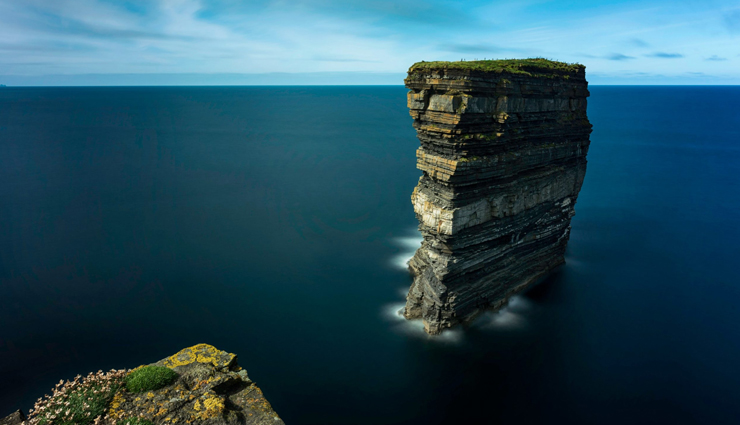
# Dun Briste, Ireland
Dun Briste, a spectacular sea-stack, estimated to be approximately 50 metres (165ft) in height, stands 80 metres (260ft) off Downpatrick Head, in the town-land of Knockaun, east of Ballycastle, Ireland. Downpatrick Head is where the Atlantic has gouged a huge bay from the mighty cliffs and their summits scoured of all vegetation except grass by the ceaseless ocean winds.
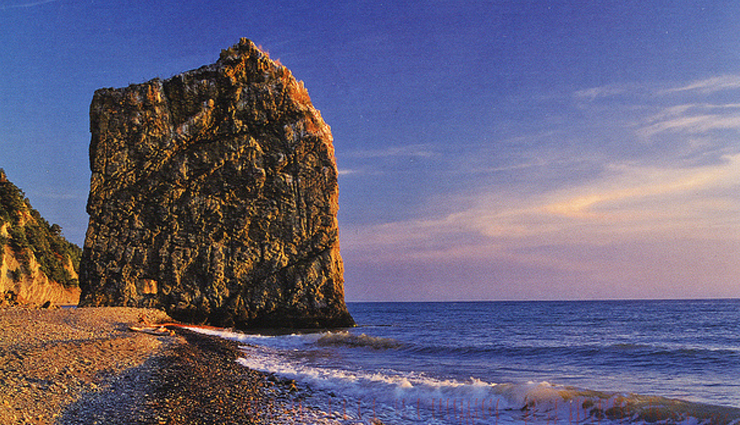
# Sail Rock, Russia
Sail Rock is a natural sandstone monolith located on the shore of the Black Sea, in Krasnodar Krai, Russia. It resembles the outline of a ship’s sail, hence its name. The monolith lies 17 km (10.5mi) to the southeast of Gelendzhik, near the village of Praskoveyevka (which is about 500 meters (1,650ft) from the coast) and the farmstead of Dzhankhot (approximately twice that distance from the coast).
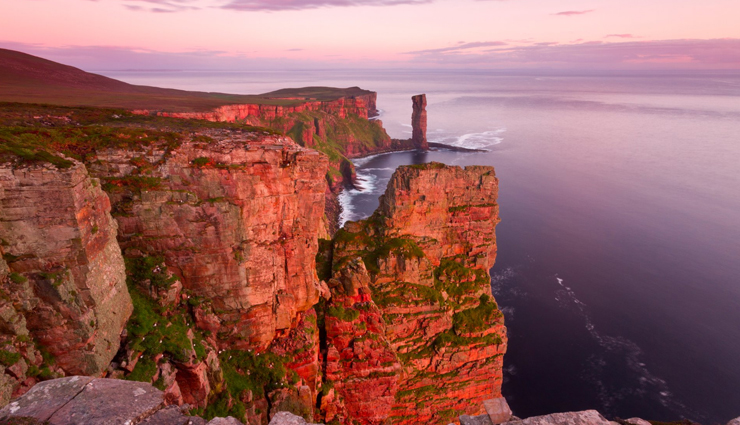
# Old Man of Hoy, Scotland, UK
The Old Man of Hoy is a 449 feet (137m) sea stack on the island of Hoy. It is a distinctive landmark from the Thurso to Stromness ferry and was first climbed in 1966. This stack is an red sandstone stack, perched on a plinth of basalt rock. It stands close to Rackwick Bay on the west coast of the island of Hoy, in the Orkney Islands, Scotland.
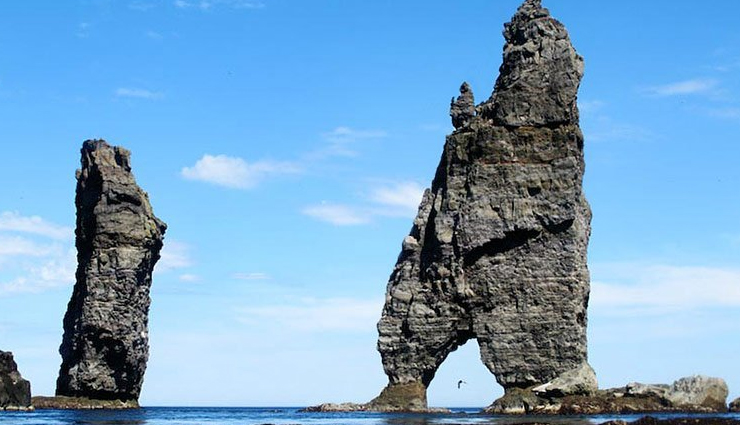
# Risin og Kellingin, Faroe Islands
Risin og Kellingin (Risin and Kellingin) are two sea stacks just off the northern coast of the island of Eysturoy in the Faroe Islands close to the town of Eiði. The name Risin og Kellingin means The Giant and the Witch and relates to an old legend about their origins. The Giant (Risin) is the 71m (233ft) stack further from the coast, and the witch (Kellingin) is the 68m (223ft) pointed stack nearer land, standing with her legs apart.
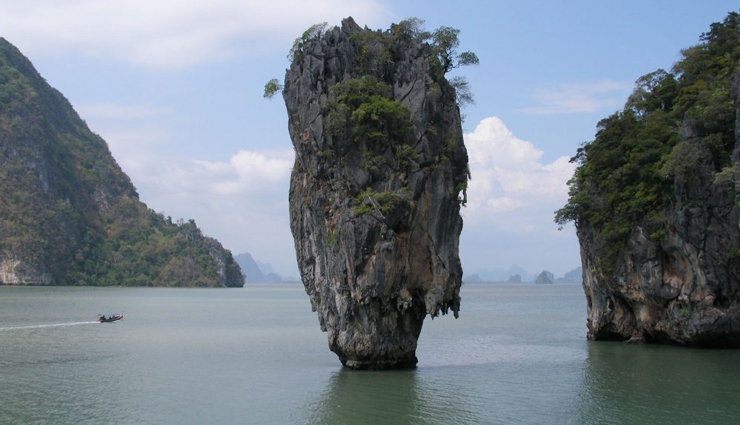
# Ko Tapu, Thailand
Ko Tapu is a limestone rock about 20 metres (66 ft) tall with the diameter increasing from about 4 metres (13 ft) near the water level to about 8 metres (26 ft) at the top. It lies about 40 metres (130 ft) to the west from the northern part of Khao Phing Kan (a pair of islands on the west coast of Thailand).
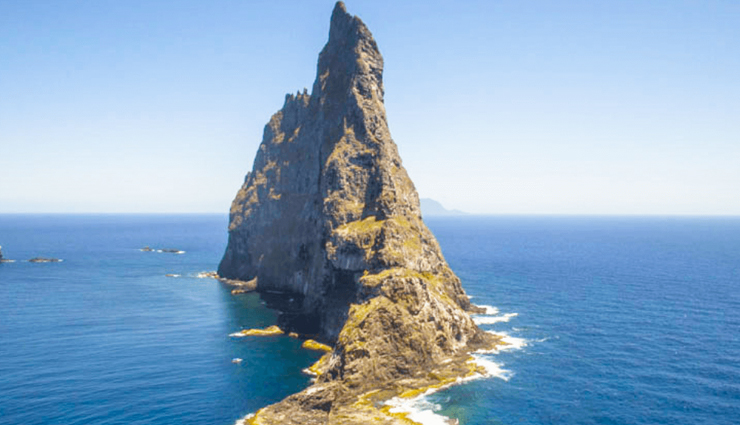
# Ball’s Pyramid, Australia
Ball's Pyramid is 20 kilometres (12 mi) southeast of Lord Howe Island in the Pacific Ocean. It is 562 metres (1,844 ft) high, while measuring only 1,100 metres (3,600 ft) in length and 300 metres (980 ft) across, making it the tallest volcanic stack in the world. Ball's Pyramid is part of the Lord Howe Island Marine Park.In 2001, a large species of insect commonly known as a tree lobster or Lord Howe Island stick insect was discovered clinging to the stack eighty years after it was believed to have gone extinct. Rats introduced to the larger islands are to blame for the six-inch insect’s demise. Scientists captured several insects to breed, which they finally did successfully, and may be introduced to the mainland.





